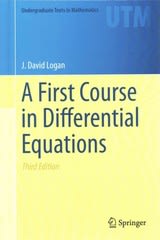Question
Consider an unbalanced study with six subjects, identified as A, B, C, D, E and G. In the actual study, ? Subjects A and B



Consider an unbalanced study with six subjects,
identified as A, B, C, D, E and G. In the actual
study,
? Subjects A and B are assigned to the first
treatment, and the other subjects are assigned to the second treatment.
? There are exactly two successes, obtained
by A and C.
This information is needed for parts (a)-(c) below.
(a) Compute the observed value of the test
statistic.
(b) Assume that the Skeptic is correct. Determine the observed value of the test statistic for the assignment that places D and E
on the first treatment, and the remaining
subjects on the second treatment.
(c) We have obtained the sampling distribution of the test statistic on the assumption
that the Skeptic is correct. It also is possible to obtain a sampling distribution of the
test statistic if the Skeptic is wrong provided we specify exactly how the Skeptic
is in error. These new sampling distributions are used in the study of statistical
power which is briefly described in Chapter 7 of the text. Assume that the Skeptic
is correct about subjects A and G, but incorrect about subjects B, C, D and E.
For the assignment that puts D and G on
the first treatment, and the other subjects
on the second treatment, determine the response for each of the six subjects.
8. A comparative study is performed; you are
given the following information.
? The total number of subjects equals 33.
? The observed value of the test statistic is
greater than 0.
I used the website to obtain the exact P-value for
Fisher's test for each of the three possible alternatives. These three P-values are below along
with three bogus P-values




Step by Step Solution
There are 3 Steps involved in it
Step: 1

Get Instant Access to Expert-Tailored Solutions
See step-by-step solutions with expert insights and AI powered tools for academic success
Step: 2

Step: 3

Ace Your Homework with AI
Get the answers you need in no time with our AI-driven, step-by-step assistance
Get Started


